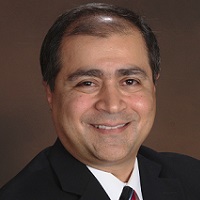 By Peyman Zand, Vice President of Advisory Services, CereCore
By Peyman Zand, Vice President of Advisory Services, CereCore
Twitter: @CereCore
Hospital and health system peers from across the nation gathered for the quarterly CereCore CIO Cohort discussion led by Peyman Zand, Vice President of Advisory Services at CereCore. The topic for the group is a popular one: IT Optimization and the unique challenges it presents in healthcare.
Healthcare CIOs agree that IT optimization plays a key role in maintaining IT standards within their respective organizations – especially as it relates to the organization’s overall business objectives supporting digital transformations. After all, digital access and telehealth is growing even more central to patient care. How CIOs accomplish these initiatives while maintaining high performing systems and compliance is where the biggest takeaways come in.
1. Strategic Decision Making is Crucial for Proper Technology Spending
“The challenge this poses for healthcare organizations is to develop a cohesive strategy to effectively manage and leverage assets,” mentioned Jennifer Jones, Research Director and Executive Advisor at InfoTech. Jones brings 15+ years of IT experience in the public and private sectors to support IT leaders with research and strategy models. Jones emphasized the dramatic growth in North American healthcare IT spend, with $96.30B spent in 2019 and a projected $239.90B slated for 2025. This is evidence that healthcare delivery methods are quickly evolving, the volume and variety of health data is growing exponentially, and patients are becoming more data centric. Her main point: strategic decision making aligned with corporate goals is a crucial element for CIOs to properly invest in technology and successfully meet their organization’s future needs.
2. Focusing on standardization and specialization will accelerate IT Optimization
Ryan Dorr, Chief Information Officer at HCA Healthcare Physician Services Group, spoke about the importance of an IT playbook, standardization and data index when it comes to implementing technology at scale. He also talked about why specialization and focus within internal IT teams is so paramount to long-term success and urged fellow CIOs to implement a tiered structure within their organizations. This not only allows employees the chance to benefit the organization with their specific skills but also to experience greater challenge within their individual roles and higher levels of job satisfaction.
“It’s important for senior level management to keep individuals on their IT teams focused on activities they specialize in, whether that’s development, architecture or another area. This allows them to perform at the top of their license. And in the long run the whole team benefits,” he concludes.
3. Collaboration with other healthcare IT experts is key to continual improvement.
Tom Kurtz, Chief Information Officer at Memorial Healthcare, spoke to the rural healthcare collaborative he’s been a part of in Owosso, Michigan for several years. This collaborative allows Kurtz and other professionals in the area to align on various goals, including ways to:
- Eliminate the duplication of efforts and increase resources
- Stop competition among staff and foster true collaboration
- Ban jack of all trades and focus on specialized care
- Implement better methods to support all institutions
“Meeting regularly with this group has improved service levels for Memorial Healthcare, which includes the implementation of a 24-hour help desk and optimization of our existing technology stack,” mentions Kurtz. A collaborative approach also increased efficiency and effectiveness of Kurtz’s IT teams including the organization’s MEDITECH Expanse implementation.
4. There’s no one-size fits all model for IT Optimization
While Jones touched on IT Optimization models and the research at the beginning of the session, Keith Pinter, board member, brought the group back to the importance of pairing with others who have similar KPIs and strategic priorities. Pinter’s model for organization leaders to align is to track their quarterly accomplishments and initiatives, broken down by quality, excellence, growth, management and engagement. This system enables leaders to analyze their goals and capitalize on their organization’s full health IT potential.
What is clear from the CereCore CIO Cohort is that health system CIOs are facing tremendous change and must optimize to move forward. As technology continues to evolve and patient-centric solutions become the central focus, it is important that IT teams both big and small work together to ensure that everyone is practicing at the top of their capabilities. Strategic decision making, specialization of roles, collaboration with other industry execs and realization that there’s not a one-size fits all approach are keys to maximizing IT in today’s everchanging landscape. You can find more insights on health system CIO priorities in this recent CHIME survey.
